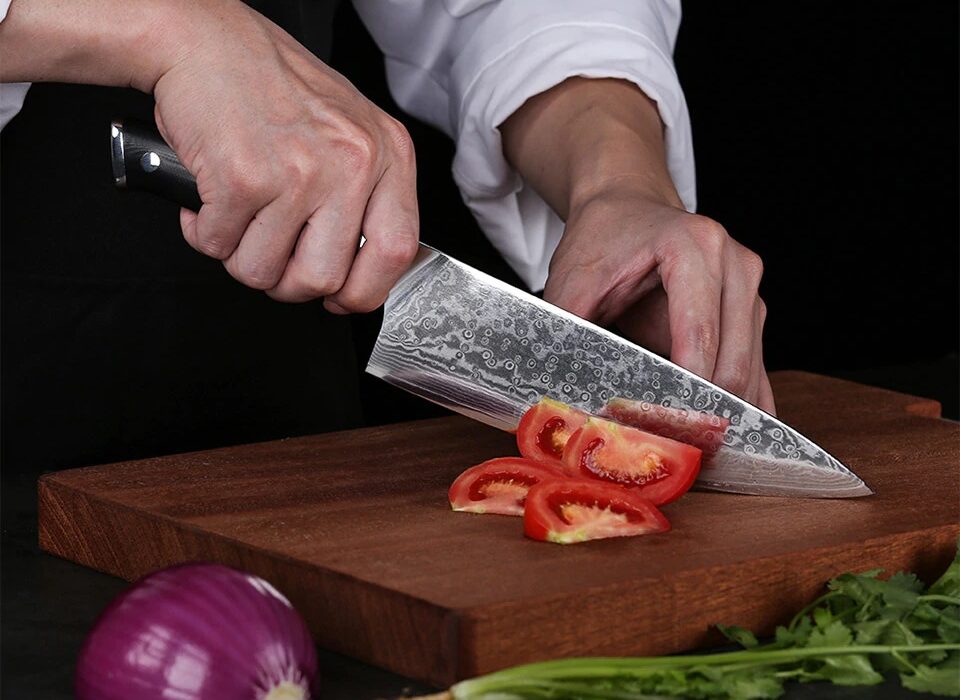The phrase what is Damascus steel frequently arises among kitchen professionals and knife enthusiasts. Renowned for its remarkable strength and wavy, water-like patterns, Damascus steel has a rich history and exceptional characteristics that continue to captivate knife makers and users globally.
In this article, we’ll explore where this iconic material comes from, its unique properties, and why it has become a favorite among artisans and chefs alike.

The Origins and History of Damascus Steel
Tracing back to ancient times, Damascus steel originated in the Near East, predominantly used in the creation of swords and blades. Notable for its durability and distinct markings, Damascus steel was recognized for its superior quality and artistry.
How Did Damascus Steel Get Its Name?
The name might have been derived from either the material’s origin in Damascus, Syria, or its characteristic patterns resembling damask fabrics. These blades were known throughout medieval Europe and the Near East for their ability to blend hardness with flexibility.
The Secret of the Patterns
The mesmerizing patterns found on Damascus steel come from the intricate process of folding and forging different types of steel. This process contributed to its legendary toughness, making it both an art and a science to create.
The Crafting Process
Traditional Damascus steel involved a combination of materials that were repeatedly folded, welded, and beaten into form. This complex procedure resulted in the alternating layers that formed the characteristic patterning.
Today, modern techniques have been adopted to replicate these unique features, resulting in similarly impressive blades that retain the aesthetic charm and strength.
Importance in Culinary Arts
In the world of culinary professionals, Damascus steel knives are revered for their precision and reliability. Chefs favor these knives for their sharpness, balance, and the pride associated with owning such a distinguished piece.
Why Chefs Prefer Damascus Steel
Beyond aesthetics, this material’s practicality stands out in kitchen settings. The delicate balance of blade sharpness and strength makes it ideal for intricate chopping and slicing, thus, elevating culinary practices.
Comparing Traditional and Modern Damascus
While traditional Damascus was famed for its unique properties and process, modern Damascus must replicate these through contemporary means. This has brought about a fascinating arena where craftsmanship and technology meet.
An Evolution of Techniques
Today, advancements in metallurgy allow similar, if not superior, properties to be achieved through modern steel variants while maintaining the legacy and allure of the ancient methods.
Understanding Damascus Knives
What is damascus steel in a practical sense can be best observed through Damascus knives, cherished for their performance and aesthetics.
Characteristics of Damascus Knives
These knives are not only functional but also a statement of craftsmanship, often passed down as family heirlooms.

FAQs about Damascus Steel
Is Damascus Steel Still Made Like Ancient Times?
While traditional techniques are rarely practiced, modern metallurgy has allowed the creation of similar quality blades through different processes.
Are Damascus Steel Knives Worth the Investment?
Absolutely. For culinary professionals, they offer exceptional performance and beauty, enhancing both cooking experience and presentation.
How Does Damascus Compare with Other Steels?
Its distinctive aesthetic and blend of strength and flexibility often make it preferable over conventional steels for specific applications.
For further in-depth information, consider checking this detailed history of Damascus knives which traces its evolution through ages, bringing a deeper understanding to enthusiasts and professionals alike.
This article contains affiliate links. We may earn a commission at no extra cost to you.


